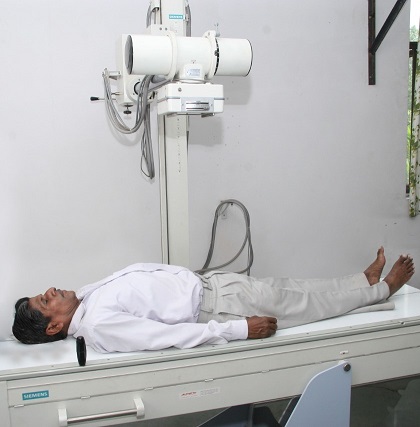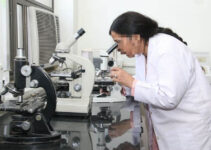What is Medical Imaging Technology?
Medical imaging technology is a bridge between engineering and medicine that deals with the evaluation of technology that captures images of the human body with the help of various radiations. These images assist medical practitioners to find the cause of an injury and illness inside the human body. Illustration of an evident image is done through various imaging modalities that include X-ray machines, Medical Resonance Imaging (MRI) machines, Computed Tomography (CT) Scan, Positron Emission Tomography (PET) scan, Ultrasound, and many more. There is a vast opportunity and good career prospects of it after B.Sc. There is no as such dearth of jobs for the deserving candidates. The radiologists get good package and handsome salary because of huge demand in the medical field.

Why radiology is more important?
With the evolution of radiology in healthcare, there have been traces of an immeasurable number of diseases that are detected ever since. With the help of imaging technology, diseases associated with pediatric illness, certain infectious diseases, congenital diseases, cancer diagnosis, etc., can be identified at early stages which in early times, was impossible to diagnose without radiology. Radiation technology has make the work of doctor easier and also plays an important role for the treatment.
Medical Imaging Technology Eligibility and Course Duration
Medical imaging technology is a field of paramedical science that opens up varied career options for an individual. From certification courses to doctoral degrees, it includes every divergent aspect of a career. Given are the details of courses available in Medical Imaging Technology:
- Certification Course: This is generally a 1-year certificate course in which it focuses on operating imaging modalities such as x-ray machines, MRI machines, Ultrasound, CT scan, etc.
Eligibility: Candidates can apply for this course after their matriculation (10th level).
- Diploma in Radiology: A diploma in radiology or Imaging Technology is a 2-year diploma program that focuses on a basic understanding of machine handling.
Eligibility: Candidates can apply for this course after completion of 10+2 senior secondary level of education with physics, chemistry, and biology as their mainstream subjects.
- BSc. in Medical Imaging Technology: This is an undergraduate degree course in radiology that takes 4-years to complete.
Eligibility: 10+2 level of senior secondary education with minimum 50% aggregate marks in science stream including physics, chemistry, and biology as mainstream subjects.
- MSc. in Medical Imaging Technology: It generally takes 2-3 years to complete MSc. in medical imaging technology.
Eligibility: For MSc., candidates must qualify their bachelors’ degree with satisfactory marks or should clear entrance exams as per college norms.
- Ph.D. in Medical Imaging Technology: This is a doctoral-level degree program. One can opt for Ph.D. after completion of their Master’s. Ph.D. could be done in general as well as in particular subjects of this field. It can take a minimum of 3 years and a maximum of 6 years to complete a Ph.D. in radiology.
Career Prospects in Medical Imaging Technology

Salary Package of a Medical Imaging Technician
Gone are the days, when doctors prescribed medicines without going through X-ray, MRI, CT scan, Ultrasound, etc. Now, the scenario has taken upturn, the doctors even for simple health issue suggest medical imaging, which is also true to a larger extent to find out the root cause of the disease. All these have increased the importance of imaging technology manifolds and also the demand of such technicians. The average expected salary of an imaging technician lies between ₹25k – ₹30k. However, it may reach up to ₹7-8 lacs per annum with experience. The package of an experienced radiologist sometimes even seen more than 50 lacs per annum.
Types of radiology
Radiology is a vast area in the medical science, which is further divided into three categories from diagnostic point of views.
- Diagnostic Radiology: When we perform non-invasive imaging skills to diagnose any disease, it is called diagnostic radiology. In common terms, diagnostic radiology uses low radiation doses to generate high-resolution images. These include X-rays, Ultrasound, CT scan, MRI, etc.
- Interventional Radiology: Interventional radiology takes minimal invasive procedures, mainly through an incision in the body for catheter and tube placement to produce images with the help of diagnostic imaging.
- Therapeutic Radiology: Therapeutic radiology is typically used to diagnose cancer treatments by using radiation therapies that prohibit cancer cells to proliferate.
Difference between radiologist and medical imaging technologist
Radiologist: A radiologist is predominantly an MBBS physician who does interpretation and diagnosis of any illness, symptoms of illness, or injury and further, report it to the respective consultant. One can become a radiologist after having an MBBS degree and further specializing in radiology fields such as breast imaging specialists, diagnostic radiology, radiation oncology, emergency radiology, etc.
Medical Imaging Technologist: A medical imaging technologist has to operate imaging modalities and capture evident images, their work mainly lies on machinery. One can become a medical imaging technologist only after having a diploma or bachelors’ degree in imaging technology.
Roles and duties
- Preparation of patient positioning before the diagnostic procedure
- Delivering control panel update
- Skilled in performing accurate diagnostic tests
- Forming good command over every subject of radiology
Departments
- Multispecialty hospitals
- Nursing homes
- Private diagnostic centers
- Cancer treatment centers
- Healthcare centers
- Medical laboratories
Core Subjects
- Fundamentals of Physics and Radiation
- Radiographic Photography and Imaging Process
- Routine Radiographic Procedures
- Specialized Radiographic Procedures
- Quality Control and Radiation Safety
- Interventional Radiology, Mammography, and Digital Radiography
- CT – Basic Physics and Imaging
- MRI – Basic Physics and Imaging
- Ultrasound & Electrocardiography
Top Colleges in Medical Imaging Technology
- Armed Forces Medical College, Pune
- Lady Hardinge Medical College, New Delhi
- Kasturba Medical College, Chennai
- Jamia Hamdard University, New Delhi
- Banaras Hindu University, Varanasi
- Manipal University, Manipal
- Mahatma Gandhi Institute of Medical Sciences, Maharashtra
- All India Institute of Medical Sciences (AIIMS), New Delhi
Top 10 Colleges and universities of the world
- Harvard University, USA
- University College London, UK
- Johns Hopkins University, USA
- King’s College London, UK
- Radboud University Nijmegen, Netherland
- Stanford University, USA
- Heidelberg University, Germany
- University of Oxford, UK
- University of Toronto, Canada
- Technical University, Munich, Germany

